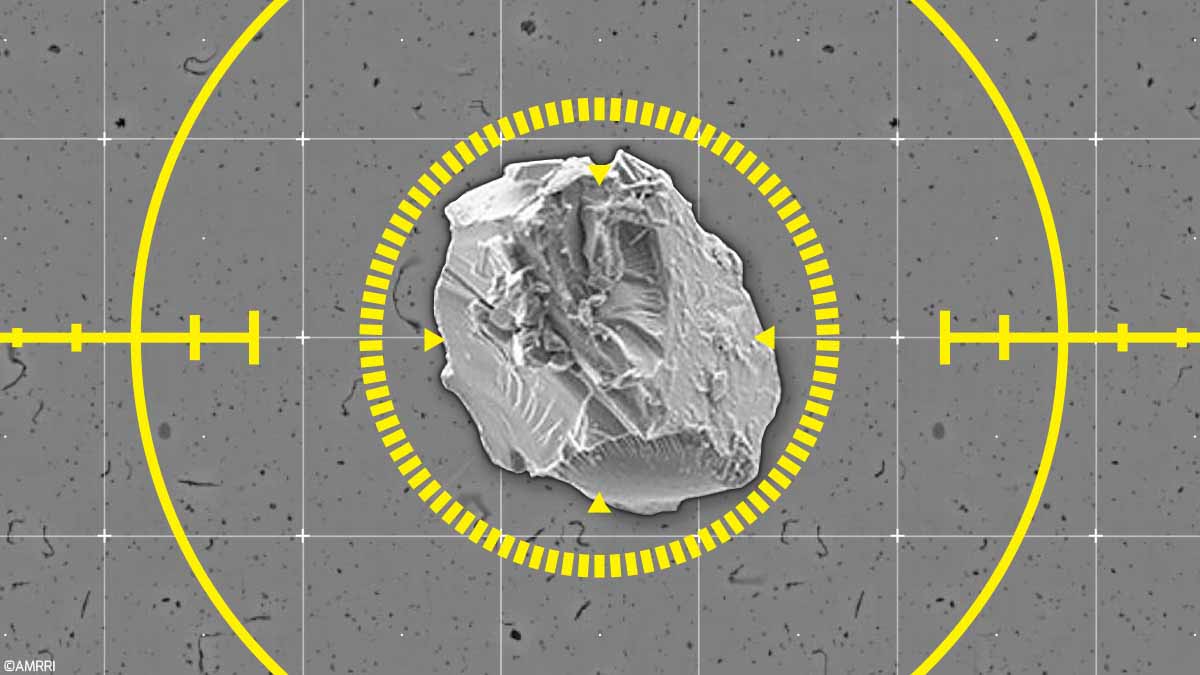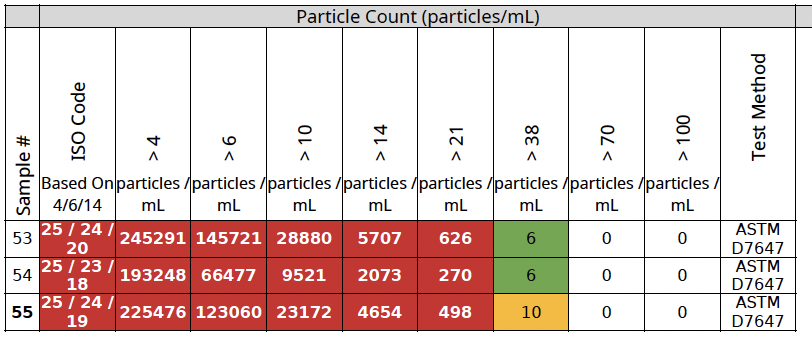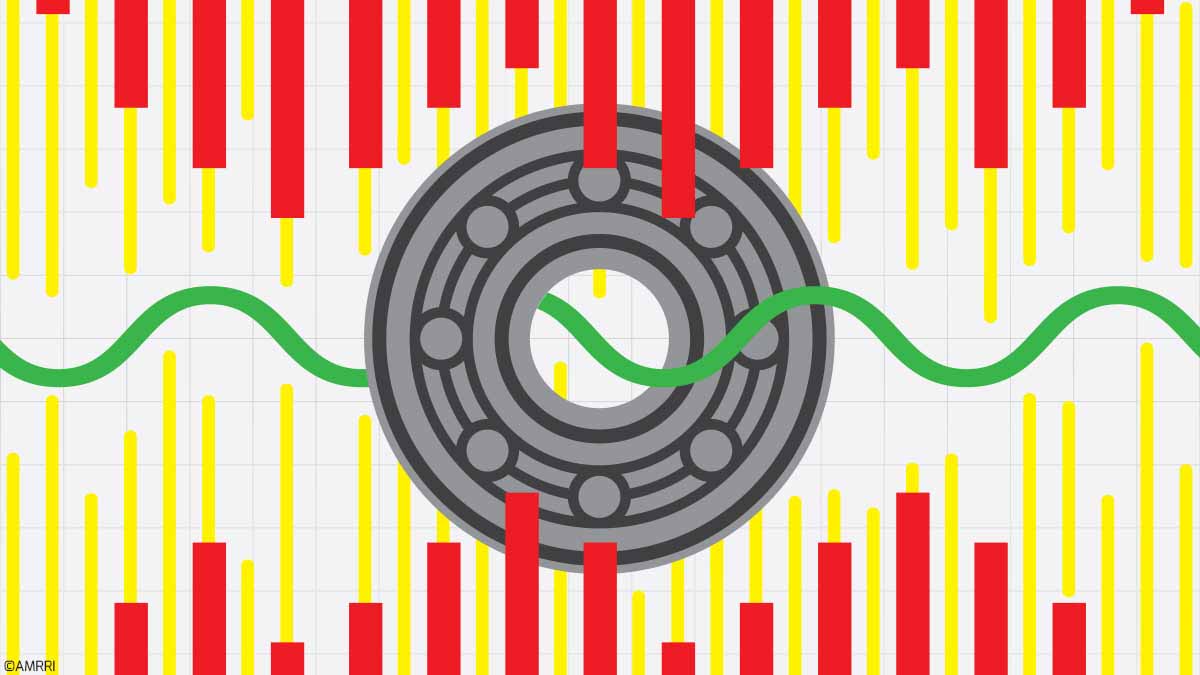Contamination within lubricants circulating through equipment can range from air, water, or, the most damaging, particles. The most common cause of equipment failure is particle contamination in the lubricant, and, specifically, 80% of hydraulic system failures can be traced back to contamination caused by particles. Particles can enter a system in various ways and cause a wide range of issues.
The Cost of Contamination: Why Particles Damage Machinery
Particles found within the lubricant could be dirt, metal, sand, soot, and rust. These particles can damage the machine, particularly hydraulic equipment, but components like compressors, turbines, robotics, gear systems, and bearings can also experience damage.
These small, hard particles can scratch the machine’s surfaces and, as a result, cause a cascading increase in wear—this compounding damage leads to major, costly failures.
These hard particles can also cause other concerns, such as lubricant degradation, clogged filters, jammed valves, surface erosion, overheating, and a loss of system efficiency. With such a wide range of issues, it’s no wonder particles contribute to most equipment failures.
Testing for Particle Contamination
Standard oil analysis tests such as Elemental Analysis by Inductively Coupled Plasma Optical Emission Spectroscopy (ICP-OES) can quantify the concentration of contamination. However, it has a major limitation. ICP-OES can only fully analyze a particle under approximately 10 µm in diameter.
Further, it gives no indication of the particle’s morphology. Additional test methods can investigate the size and shape of the particles. Discovering this additional information can lead maintenance teams to identify the source of the contamination and assess the damage that has occurred to the component.
The test method recommended for the most reliable and accurate particle size distribution measurement is Automatic Particle Counting using ASTM D7647. This method uses two solvents (Toluene and Propan-2-ol) to dissolve soft, non-destructive particles, like oil additives, varnish, or water, so they are not counted along with the hard particles.
You only need to identify the hard particles like dirt and metal that will cause the formation of more particles through the impact on the surfaces of the machinery. The instrument used to perform the test uses laser light obscuration to detect and count particles over a range of sizes, collating the counts into size categories:≥ 4µm, ≥ 6 µm, ≥ 10 µm, ≥ 14 µm, ≥ 21 µm, ≥ 38 µm, ≥ 70 µm and ≥ 100 µm.
The number of each size category is used to determine the level of contamination in the oil. Results are presented as the number of particles per milliliter at several micron sizes, and findings are reported using ISO 4406, or ISO Code.
Understanding Particle Sizes and Their Impact on Reliability
Lower ISO code numbers are more desirable overall, potentially having less impact on machinery, though size and filter rating may mitigate that. All things being equal, larger particles have a greater chance of spanning the oil film diameter between two metal surfaces and could damage one or both. As the surface is damaged, more particles are created, resulting in a snowball effect that leads to potential critical failures in the system.
However, the sample could have been collected after the source of the particles and before they were collected in the fluid filter. In this case, the smaller numbers could be more important because they cause pitting or sliding wear at other points in the system.
Filtering out small particles poses its own problem, as they are more difficult to capture than larger particles and require specialized filters to collect. Particle Count Testing can help indicate the need for additional filtration or suggest portable filtration, as seen in the following laboratory examples.
Particle Count Testing to Increase System Cleanliness
In the following example, particle count testing was performed on a guide bearing using a very high ISO fluid (such as ISO 680 with a similar consistency to light corn syrup) in an air heater for a power generation unit. The particle count results came back extremely high, resulting in an overall report severity of 4:
Repeat severities on this sample report can indicate an action was taken, but it was not sufficient to address the source of particle contamination in the system.
High-viscosity lubricants tend to result in higher ISO particle counts due to the fluid’s high internal friction. This friction creates greater resistance to flow, trapping particles within the fluid and preventing them from moving quickly or settling out. After reviewing the high particle count results, the data analysis team recommended actions, suggesting the use of portable filtration to improve system cleanliness.
In the next example below, testing was performed on a conveyor carrier bearing in a plant/industrial setting. Particle count testing provided extremely high results, indicating potential bearing/bushing wear that could increase due to dirty fluid. The analyst’s maintenance recommendations suggested performing vibration analysis to confirm the problem and inspect the unit for bushing wear.
Advanced Testing Beyond Particle Counts: Morphology and Analysis
Performing Particle Count testing will provide information on the different sizes of particles and their distribution in the oil but will not determine their morphology. To determine specific, exact types of hard particles present within the lubricant, tests like Filter Debris Analysis, Micropatch, and Analytical Ferrography are recommended. These tests include images of the particles, size, and type indicated with a severity provided by the use of microscopic techniques.
How to Measure System Cleanliness for Maximum Reliability
Particle Count is one of the best available tools for measuring system cleanliness. This test is suitable for most turbine, compressor, hydraulic, transmission, and gear oil fluids and systems. Evaluating the use case, objectives, and system type is key to determining whether particle counting and other tests may provide the most valuable data. Particle Count is crucial to maintaining the performance and longevity of sensitive components with small clearances.











